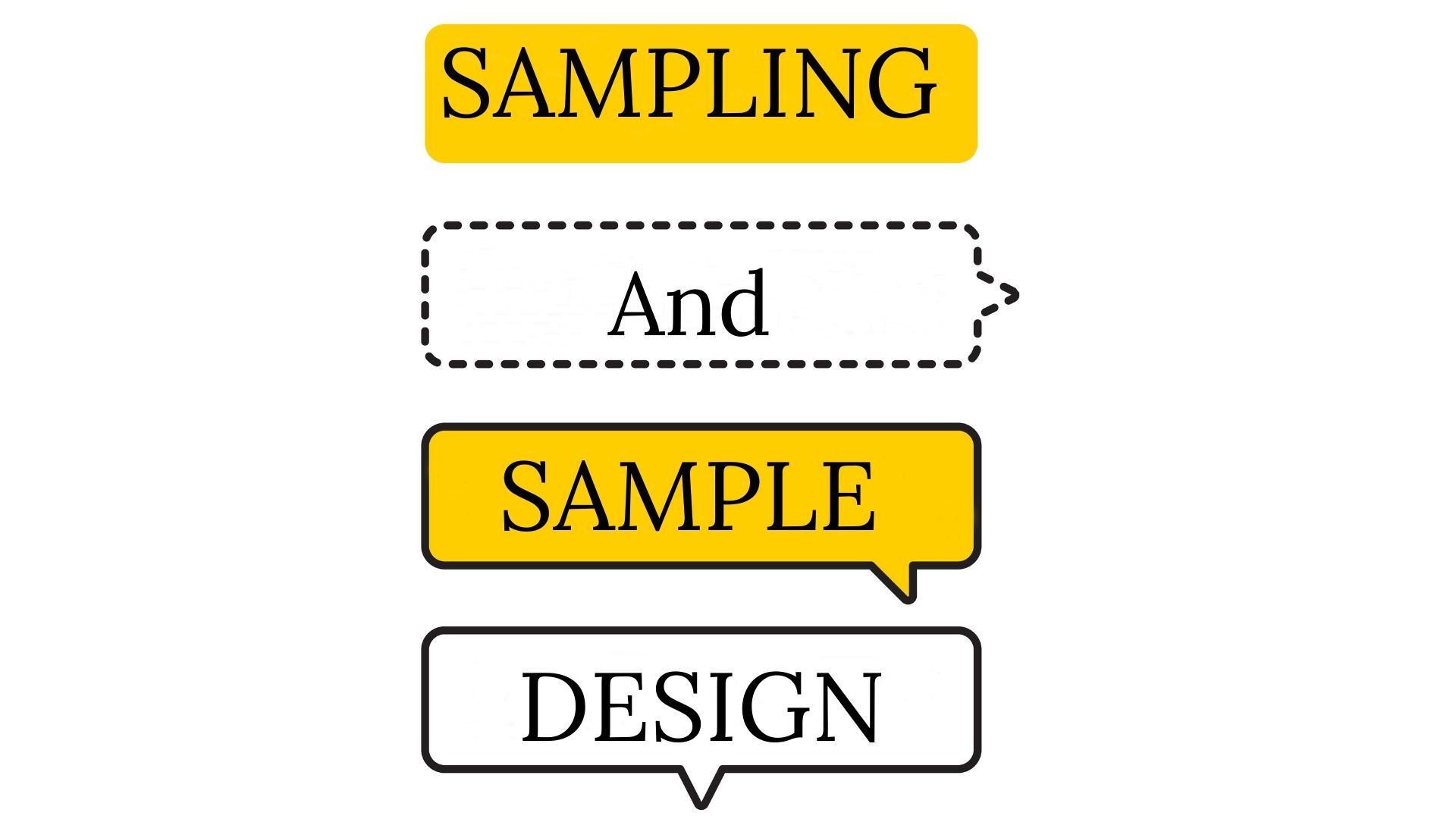
Sampling and Sample Design - Types and Steps Involved | Marketing91
Sampling and Sample Design – Types and Steps Involved
Sampling and sample design is an essential factor as it is based on the judgment of the researcher to provide the best information for the objectives study.
A sample is a smaller part of a whole quantitative data that has been collected through surveys or thorough observations. It can be defined as a smaller unit that represents the real data.
The method of collecting samples is called sampling. Sampling is the basis of almost every research and hence is a crucial part of most projects. There are multiple ways that you can use for collecting samples.
Table of Contents
Principles of Choosing a Sample
As mentioned earlier, a sample is just a smaller fragment that represents the real data collected. Thus, the sample should be collected in a way that, when you analyze it, you get the information about the real data.
The sample should be representative of the data. It should be a unit containing all the subdivisions included in the data. This means integrating the sample by reduced proportions must give the recorded quantitative data.
The sample must also be free from errors. Thus, the size of the sample matters too. It shouldn’t be too small to avoid omitting anything or for it to be full of errors. It should be made using a given proportion, so it is error-free.
There is another concept of bias and precision in sampling. You can have four outcomes based on the high and low of the bias and precision scale, respectively. The four outcomes are:
- Precisely wrong, if you are high on both scales.
- Precisely right, if you are high on precision and low on the bias.
- Imprecisely wrong if you are high on bias but low on precision.
- Imprecisely right if you’re low on both scales.
You have a better sample if you have a low bias. Thus, it is preferable to be imprecisely right than to be precisely wrong.
Types of Sampling
There are two types of sampling:
- Probability Sampling
- Non Probability Sampling
These two divisions are then subdivided. These are discussed below.
Probability Sampling
This is the type of sampling where the probability of every part of the sample is known. This type of sampling gives a precise relationship between the sample and the data called the population.
The sample should be representative of the population. This type of sampling tells you for sure if the sample is or not. You can also give a number to the amount of certainty you have the sample being a representative. This number is called significance.
There are different ways of probability sampling. They are:
- Simple Random Sampling
- Stratified Random Sampling
- Proportional Stratified Random Sampling
- Systematic Sampling
- Cluster Sampling
These can be explained as under:
1. Simple Random Sampling
In this type of sampling, every member of the population, or every constituent of the data, has an equal chance of being selected to be the sample. This is a simple method and doesn’t require a lot of knowledge before the collection of samples.
Even though the method is simple, it has a lot of drawbacks. It is not cost-efficient. It is also not that precise as the sample might not represent the data or population. The samples may have a lot of errors. Thus, this makes this method rather inefficient.
2. Stratified Random Sampling
To better the method of random sampling, the method of stratified random sampling is used. In this type of sampling, the population is divided into strata. The strata are subdivisions of the population that are homogeneous. The sampling is then randomly collected from different strata.
This type of sampling decreases the sampling cost and has a higher accuracy rate than simple random sampling.
It, too, has its disadvantages. The homogeneity traits or the type of data used to construct strata and eventually collect samples may be flawed. This flaw may end up leading to collecting an incorrect sample.
3. Multistage Stratified Random Sampling
This type contains multiple stages for constructing strata and random sampling, hence a multistage stratified random sampling.
The region that has to be sampled is divided into different strata that are randomly selected for sampling. This is the first stage. The next stage includes collecting random samples from the already chosen random strata.
This is different from stratified sampling in the way that a sample is collected from each stratum in the latter as opposed to the former. This is also more efficient and has a lower cost.
Due to randomness in the sampling, it has a lower precision rate. Also, the clustering in this sampling is stronger, even more than simple random sampling.
4. Systematic Sampling
In this type of sampling, the sample is taken from a regularized pattern that can be rectilinear, triangular, or hexagonal; this ensures coverage of all the subsets. The sample selected can be the nth number of each pattern. Thus, this gives systematic coverage.
This also is very efficient, both in terms of sampling and cost. But the downside to this is that it has a lower precision rate.
5. Cluster Sampling
Cluster sampling is done when you have to sample a widespread population. It is done by dividing the population into clusters. Then two or three from the entire clusters are selected.
The sampling is done from the selected two or three clusters. This is cost-efficient but too lacking in high precision.
Non-Probability Sampling
In this sampling method, you can’t know the probability of the part of the sample with confidence.
The conclusions drawn from this probability cannot be for the whole population for sure. This type of sampling method is developed to address specific problems that can’t be solved using random sampling otherwise.
The different types of non-probability sampling are:
- Convenience Sampling
- Quota Sampling
- Purposive sampling
- Snowball Sampling
1. Convenience Sampling
This type of sampling selects a sample based on easy accessibility. The samples are collected as to how convenient they are, hence the name convenience sampling. These samples are easy to collect and organize. But the possibility that the sample is representative of the population is not very high.
2. Quota Sampling
In this type of sampling, the population is divided into categories. The sample is then selected from the divided categories. The sampling is done until the desirable sample is selected from the categories.
3. Purposive sampling
In this type of sampling, only the people who meet the required criteria are approached. It is checked if they meet the other specified criteria. If so, they select the sample. An example where this is done is when doing market research, which is age-specific.
4. Snowball Sampling
In this type of sampling, the research starts with the person who meets the research criteria. This person is then used in aiding to find other people who fit the criteria. This is a good method if thorough research has to be done.
Steps Involved in the Process
Different steps that take the sample process move ahead are
1. Defining the Target Population
For effective business research, the very first step revolves around the definition of the target population. The target population is defined in different terms such as sampling unit, time frame, and extent.
2. Specifying the Sampling Frame
After the target population is defined, the next step lets the researchers decide on the sampling frame that includes the list of elements from which the sample can be easily drawn.
3. Specifying the Sampling Unit
In the third step of sampling and sample design, a sample unit is specified, a basic unit for incorporating a single element or a group of elements of the population that are supposed to be sampled.
4. Selection of the Sampling Method
The fourth step revolves around the selection of different sample units. This method is influenced by different goals, such as business research, time constraints, availability of financial resources, and the nature of the problem that is supposed to be investigated.
5. Determination of Sample Size
In this step of sampling and sample design, the sample size is determined. Different types of classifying techniques come into play while deciding the sample size.
6. Specifying the Sampling Plan
This step plays a crucial role in specifying and deciding the implementation of the research process. You will find out the outlines for the modus operandi of the sampling plan.
7. Selecting the Sample
In this final step of sampling and sample design, the final selection of sample elements occurs. Here, interviewers should stick to those rules crucial for the actual and smooth implementation of the research.
Final Thoughts!
Every method of sampling has its upsides and downsides.
While conducting the research, you have to decide which method is the most suitable for your research.
No one method is exact and is not ideal. Thus, there should be left measures for minute errors or omissions.
The ultimate goal is to select a sample that can be as close as possible to becoming a representative.








